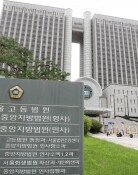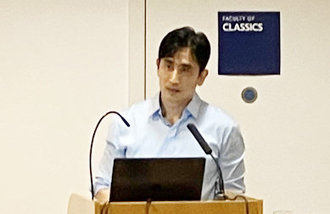Horse-shaped pottery excavated at Geumryeongchong in Gyeongju
Horse-shaped pottery excavated at Geumryeongchong in Gyeongju
Posted October. 01, 2019 07:31,
Updated October. 01, 2019 07:31

A horse-shaped earthenware object, the largest of its kind in the country’s history, has been excavated at the Geumryeongchong Tomb site in Gyeongju, North Gyeongsang Province. The presence and location of the objects excavated within and around the tumuli suggest that the tomb belonged to a king, not a young member of a royal family as presumed before.
“We’ve recently excavated some 30 earthenware pots used for ancestral rites near the tomb, which had been unearthed during the Japanese colonial era,” the Gyeongju National Museum announced, saying it turns out that the tomb is likely to have been built above the ground, not from underground as previously known.
The Silla Dynasty’s tomb, presumed to date back to the late 5th century or the early 6th century, is where a pair of the pottery in the shape of a warrior on horseback, the National Treasure No. 91, had been excavated. The horse-shaped pottery discovered during the latest investigation is 56 centimeters high, and has delicately formed face, jaw, neck, and hooves. Along with it, earthenware for memorial services also turned up. Given that parts of it were neatly cut off, the pottery seems to have been intentionally broken and dedicated to the tomb.
It is also noteworthy that over 30 jars filled with offerings such as oysters and clams were found out, located with a consistent space between them. The Gold Bell Tomb turned out to be 28 meters in diameter, eight meters larger than previously known, but is still not one of the largest tombs in the country. Yet, the tomb had more jars for rituals even than Seobongchong, a bigger tomb located nearby. Inside and outside the earthenware, some bones of animals such as a horse and a cow, a plate with a cover, bells, and glass beads were also excavated. Shin Gwang-cheol, a curator at the museum, explained that the floor where the earthenware was found out indicates the process of building the tomb and holding grand memorial services several times.
Some suggest that Geumryeongchong was a royal tomb. A gold crown of the Silla Kingdom (Treasure No. 338), gold bells, belts, jade bracelets, and a large sword had been discovered near the tomb, but since most accessories were small, experts presumed that the tomb belonged to a young member of a royal family, not a king. However, Park Kwang-choon, a professor at the Department of Archaeology and Art History at Dong-A University, said that the discovery of a prop, which had been found only near royal tombs, as well as the scale of rituals hint at a possibility that it is a royal tomb of a king.
An excavation study into Geumryeongchong was conducted in 1924, but the soil and stones that covered and surrounded the burial mound were not investigated back then. This is why the tomb was incorrectly known for being an underground grave, unlike other kingdom sites built during the Silla Dynasty. The Gyeongju National Museum is set to excavate the mound again by next year.
Jong-Yeob JO jjj@donga.com







